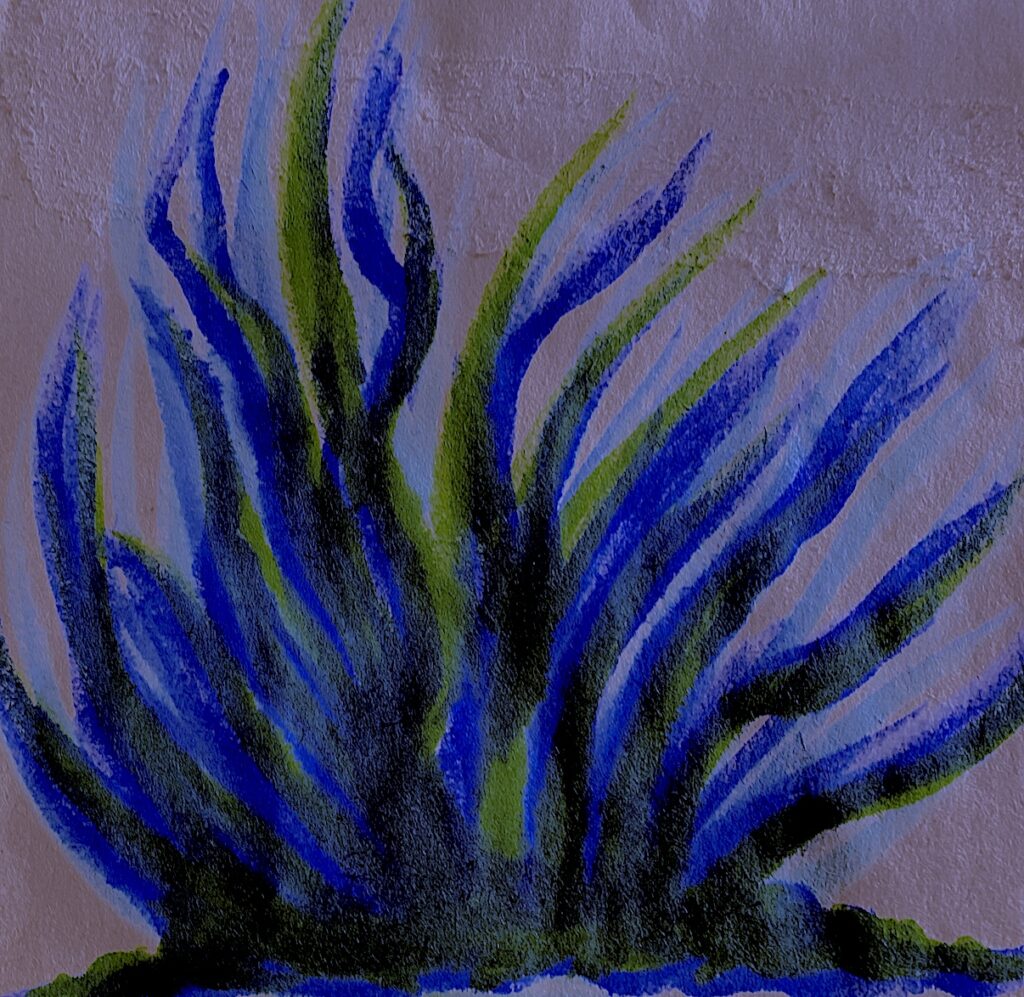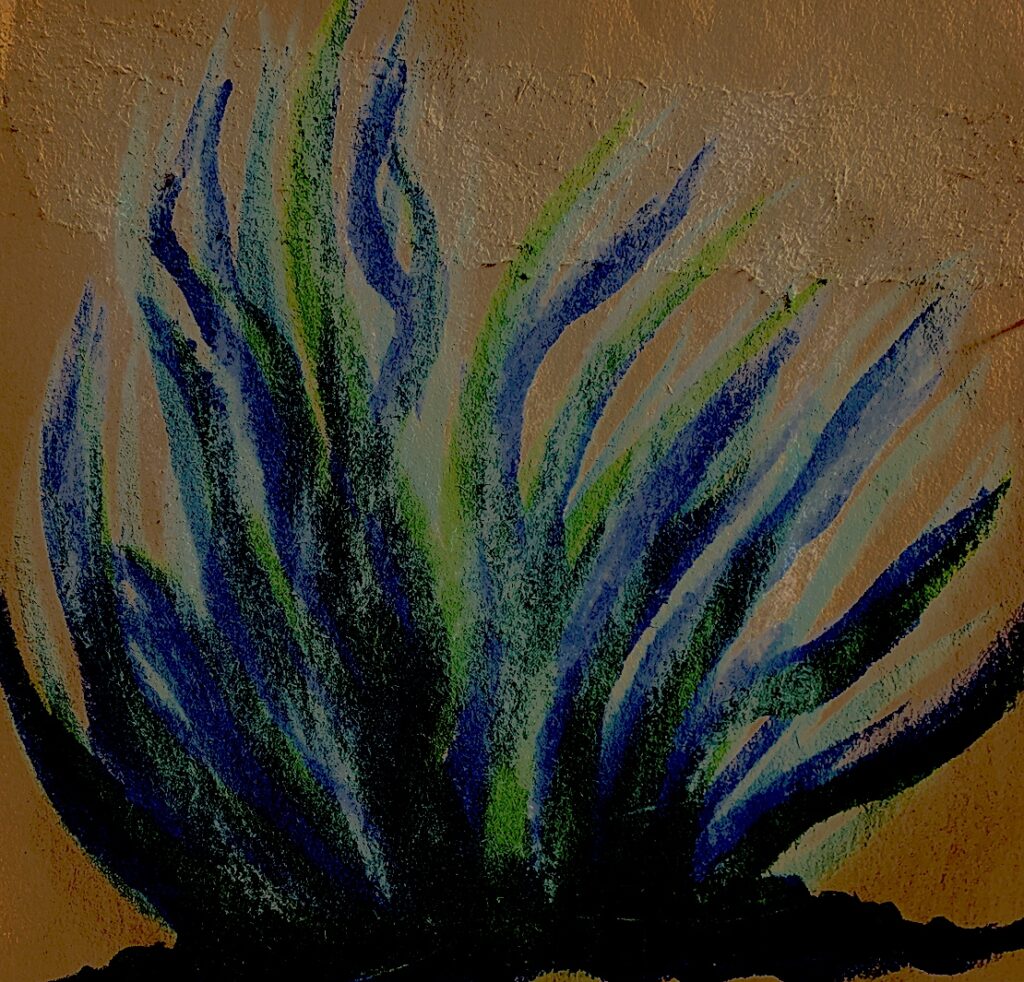Process Into Image Paint Brief.
Week 2: PROCESS LED INQUIRY: Drawing from a Painting made before 1900.
Drawing Processes:
* Select a fourth image(s) or item to draw.
* Analyse the image’s visual properties (figural and abstract).
* Generate multiple drawings.
* Process this image by reducing, confusing, or altering using a range of methods (i.e. charcoal, graphite, provisional paint studies, gouache, or watercolour sketches, alterations using the photocopier, overhead projector, photoshop and other digital imaging software).
4a. PAINTING made before 1900: ‘Young Woman in Bright Blue at the Conservatory’. Pierre-Auguste Renoir. 1877. oil, canvas. Location: Private Collection. Accessed September 28, 2021. https://www.wikiart.org/en/pierre-auguste-renoir/young-woman-in-bright-blue-at-the-conservatory-1877.
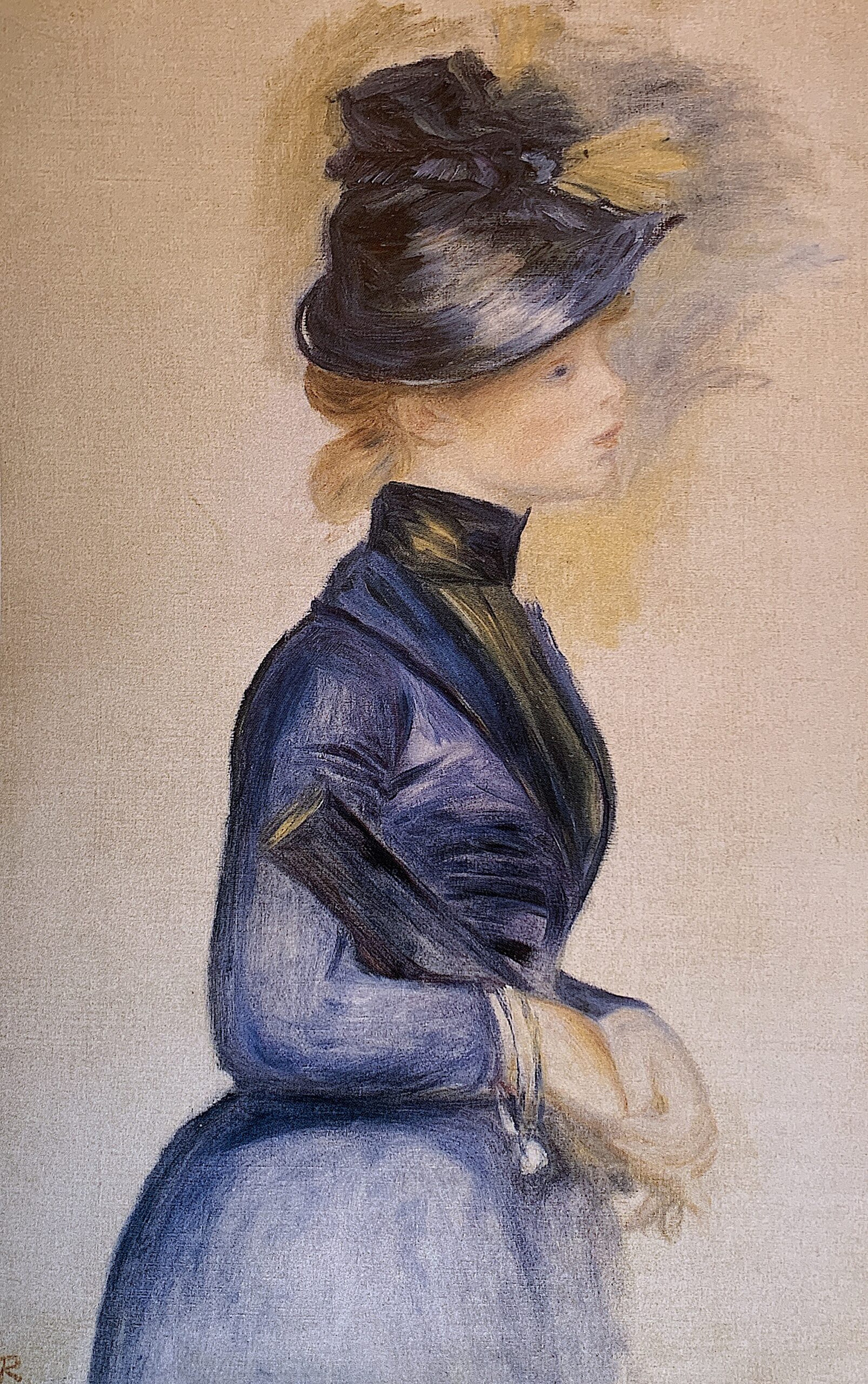
Pierre-Auguste Renoir is a beautiful painter; I am fortunate to have seen some of his paintings up close and exhibitions abroad, and here in Aotearoa.
There are a number of reasons why I chose this particular painting. It looks like a preparatory sketch, the female figure is in profile, perhaps poised to move, and I like Renoir’s use of dark navy blue. Not only is navy blue an elegant colour, but the subject matter displays elegance in her stiff late 19th century dress. Her gloved hands and face are a pale creamy white, and they match the bland neutral tone of the background. There are touches of yellowery gold paint squibbled around the hat at the top of the page like sunlight. Gold appears highlighted on the blue dress, the fabric, or feathers on the blue-black hat, and the object she is carrying. Her hair is strawberry blond and her eye is a lovely dark blue dot beneath a golden eyebrow. The female form is in profile, as if viewing a painting, but she could also be walking or taking a stride. The overall silhouette against an empty beige background also appeals, as it looks quite modern with a large empty negative shape arched around her.
Again, I started my drawings using the computer (see below), not only changing the colour tone, but emphasising the sketchiness around her head. I wanted to create a dark moody atmosphere, like a purple storm of dark thoughts.
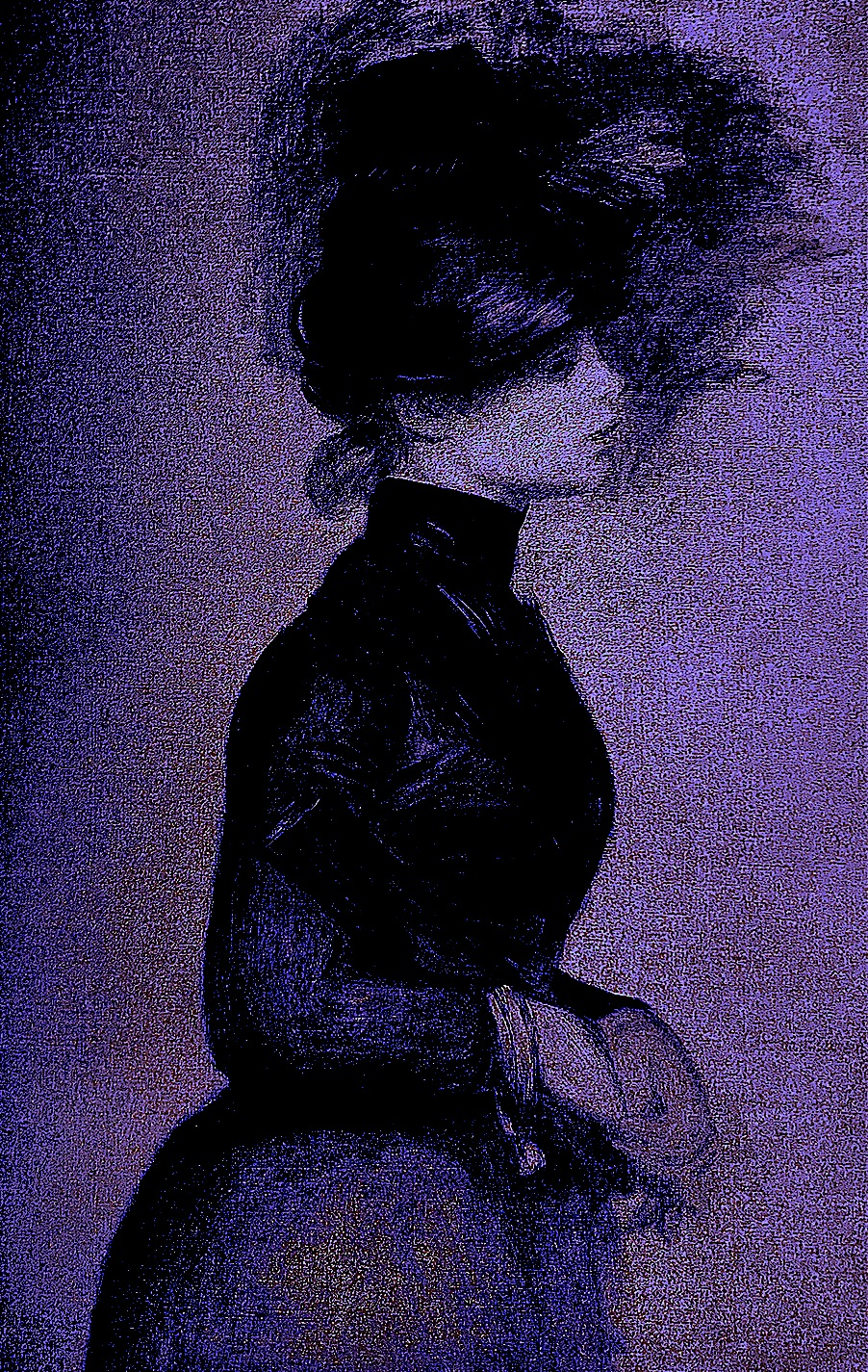
Next, I tried to create an opposite effect (see below). My goal was to make a negative-type photograph by whitening around her hat, head, gloved hands and facial features. The sketchiness around her head has now, very lightly, transformed into a white cloud of thoughts.
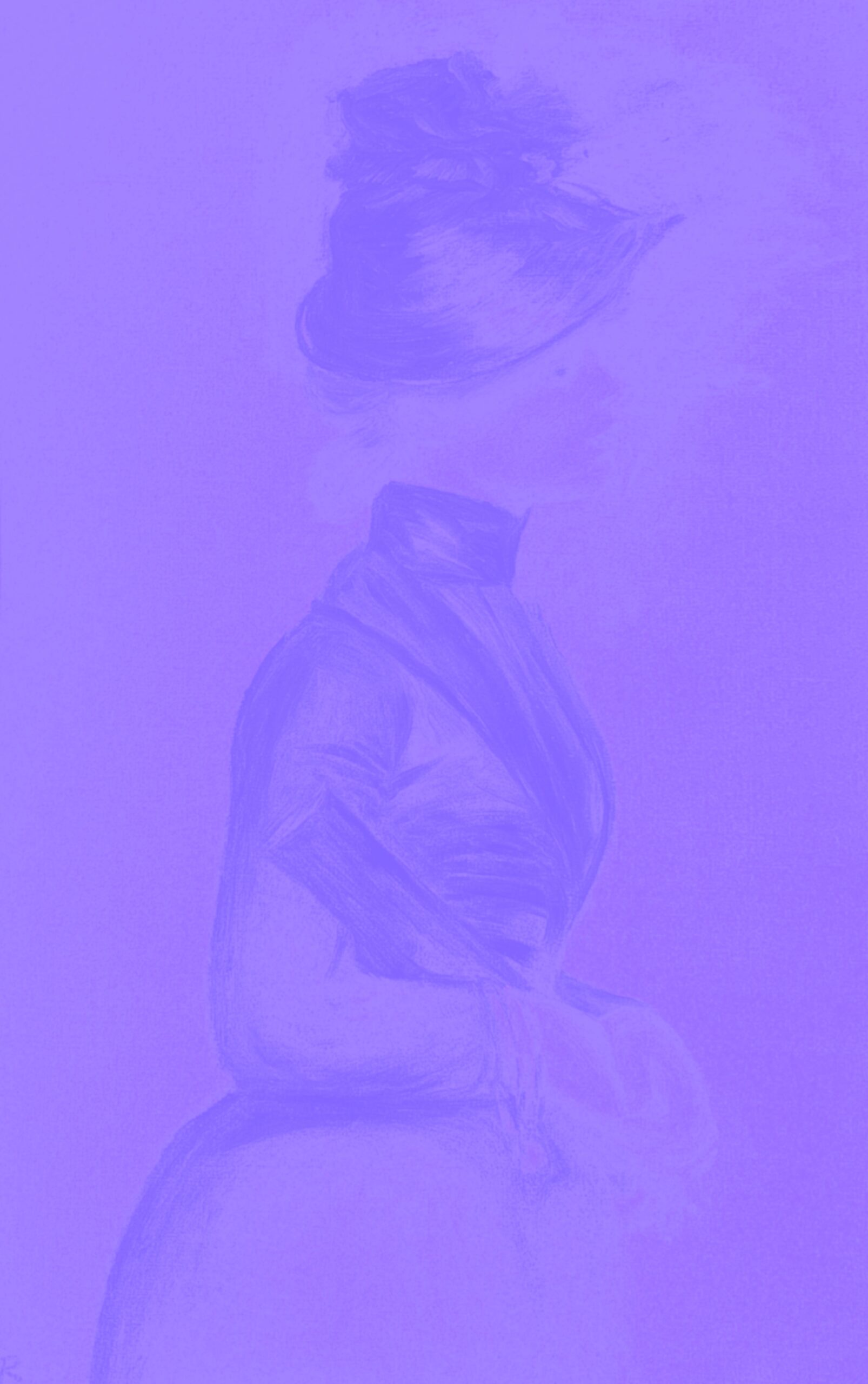
My first sketch was with charcoal on an old scrap of coloured paper (see below). I drew scratchy fast marks. Yet, sometimes as I sketched on certain angles, the thin charcoal stick scraped and dented the paper, but left no mark. I enlarged the eye, and gave my figure a cartoon-like expression. Thus I called her Eager Eye.

Next, I used coloured chalk pastels over ink on brown paper. Thinking of the chosen verbs that I utilised in week 1 with paint, I shifted, slid, pushed and smudged the flakey material over the ink. The soft pastel gives both works below a mysterious quality. I then digitally manipulated both figures (5, 6) in order to change the background colour to rose pink and mauve purple.
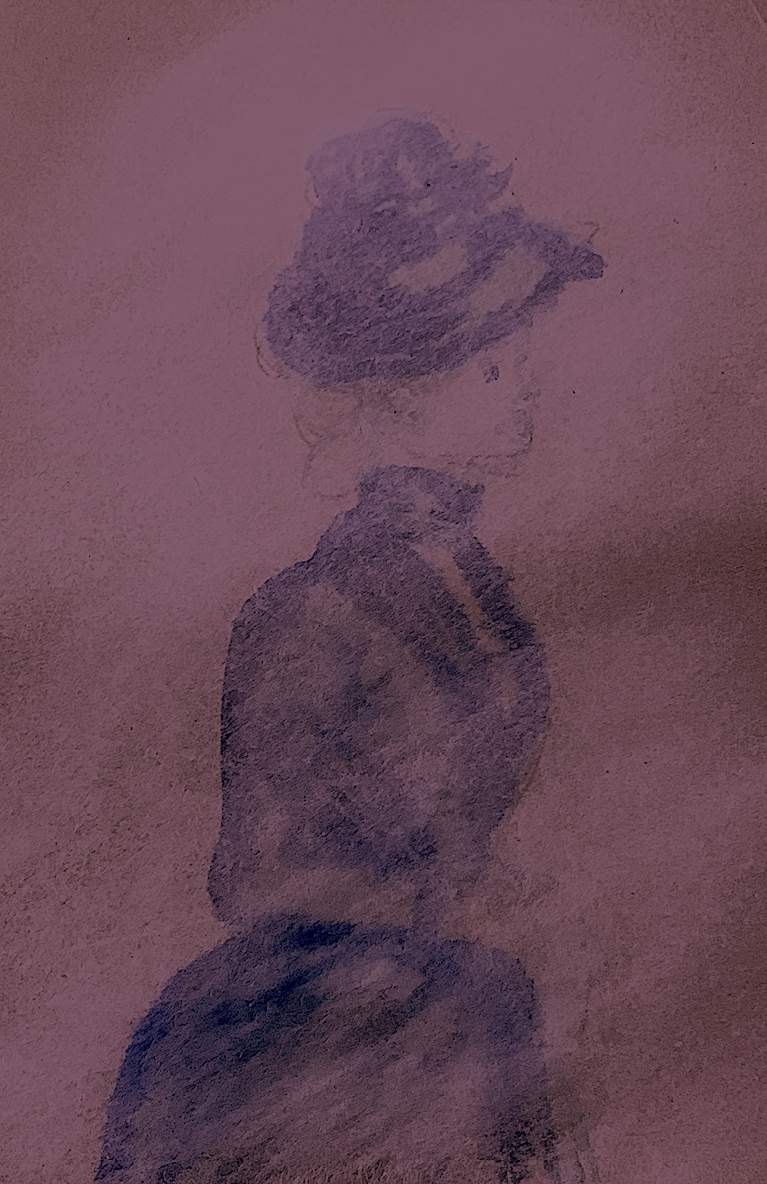
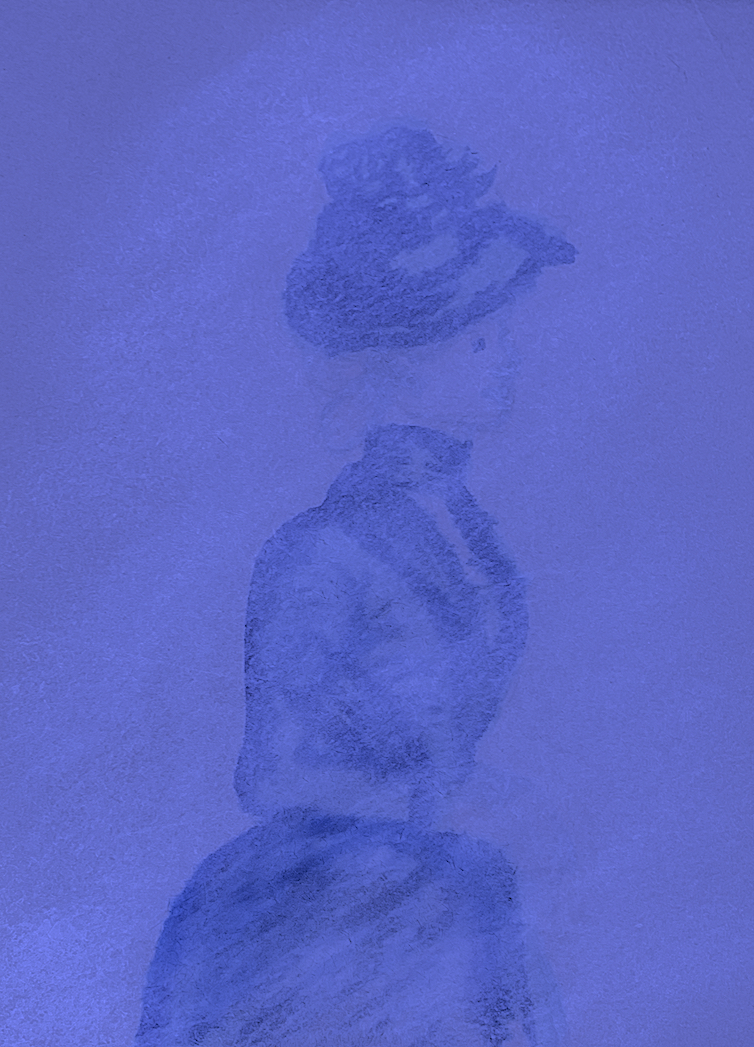
I altered Renoir’s original painting idea of one large figure, by creating 4 figures with a 4-way reflection. I placed the top pair of figures back to back, thus linking them through horizontal reflection, and then repeated the procedure to the bottom half of the picture plane with the upside down pair. By centrally placing a large background shape of brown ink and pastel, I also created another connection to these four figures. I created a darker colour on one side of the each figure to create tension between the figures, in order to evoke movement of the figures walking past or away from each other.
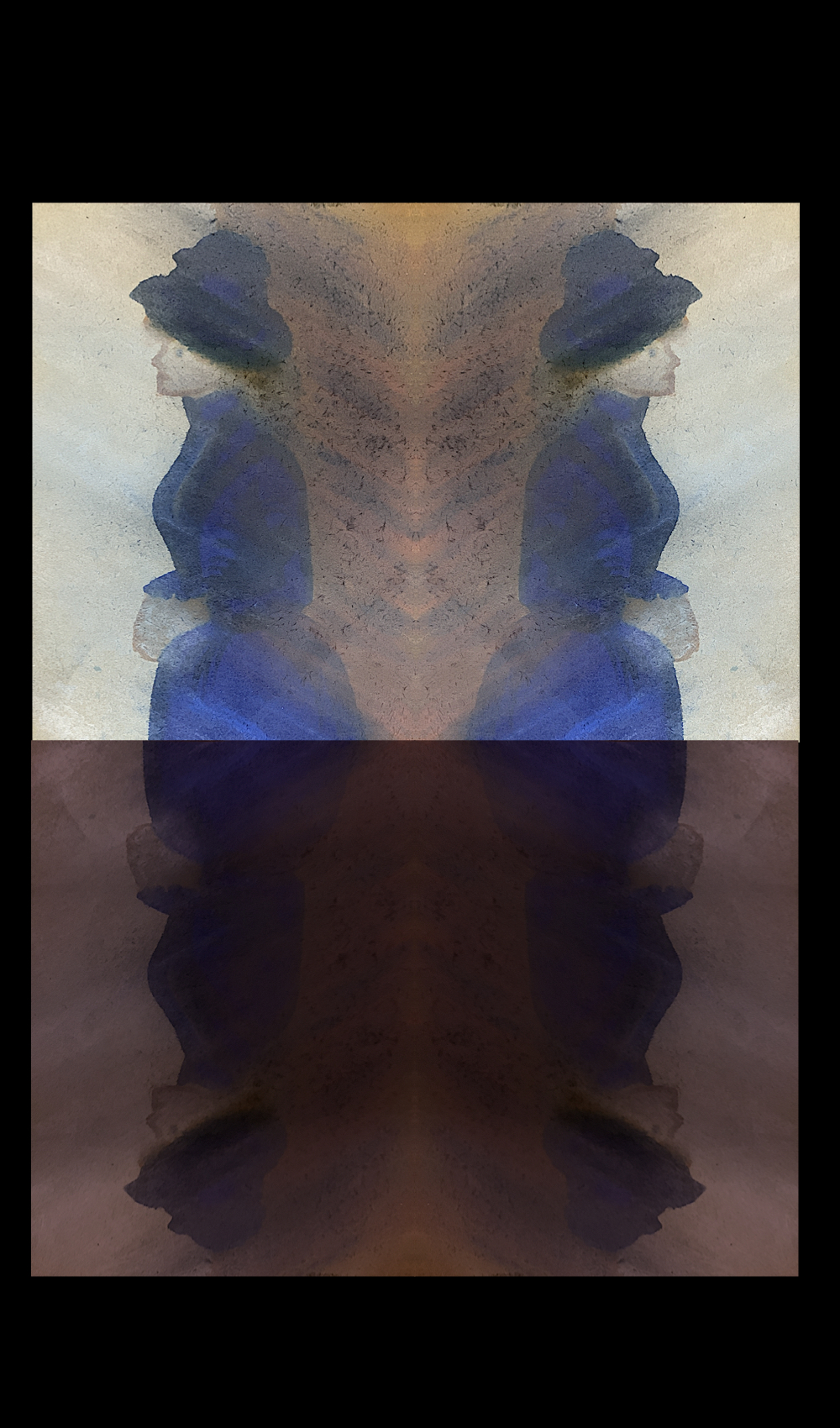
My next alteration was to just have a walking dress, with no hat or head. I lit the brown paper with a pale purple backdrop, and shrouded my dress figure in a dark navy blue feathery forest cape. This is my favourite drawing, because I enjoyed making feathery long marks.

Next, I doubled and reflected my drawing through digital means. This is another process I enjoy, because I like to further enhance and develop some works, such as this work above.
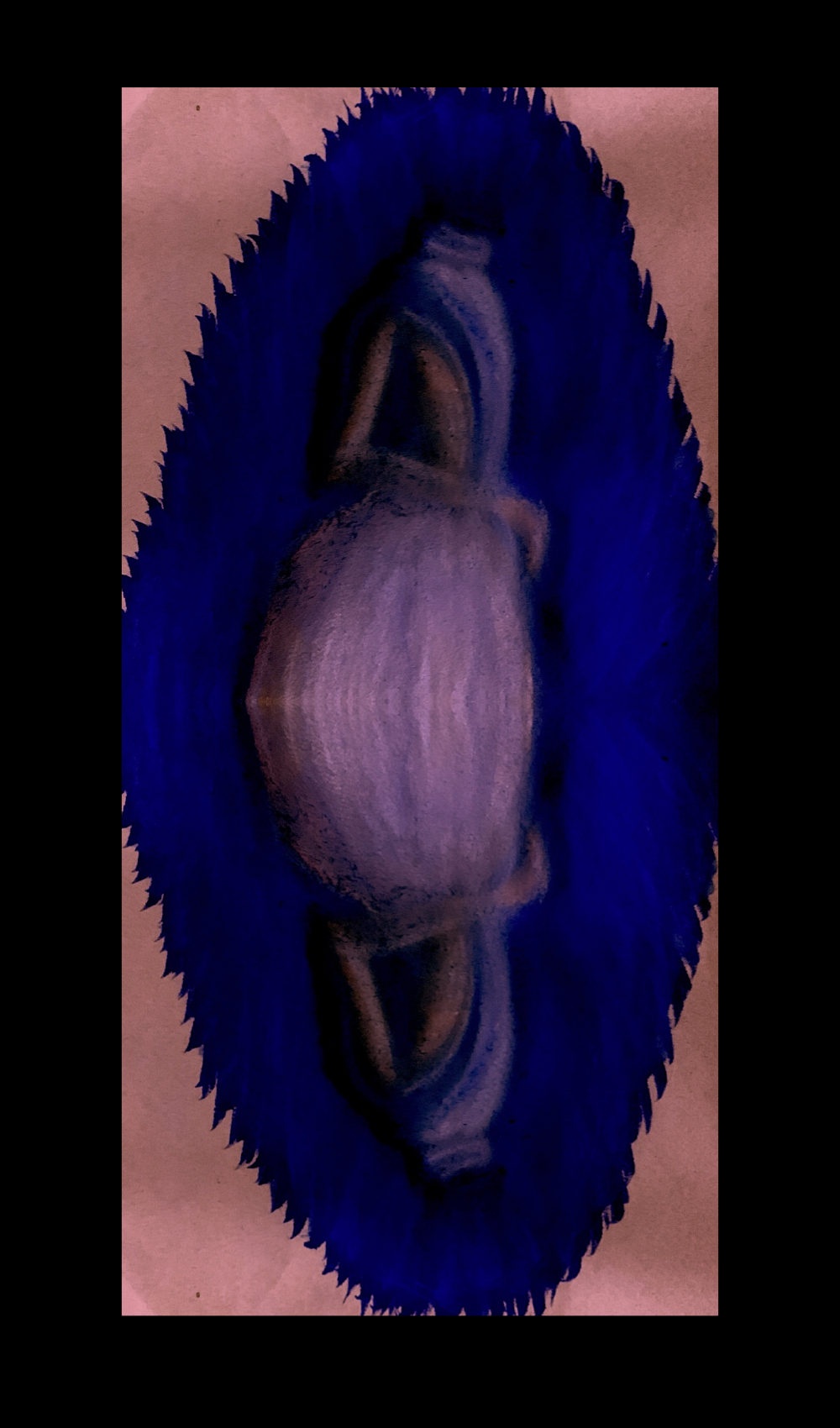
I also enjoy deconstruction. Therefore, I took apart the original image to rework a certain part. Here, I used navy ink to show enlargement and reduction. I first drew quickly a large size hat, then repeated a smaller version. They are not exactly the same because I was working free-hand. I was unconcerned with this, because I was trying to sketch with the chosen medium of ink as quickly as I was able to.
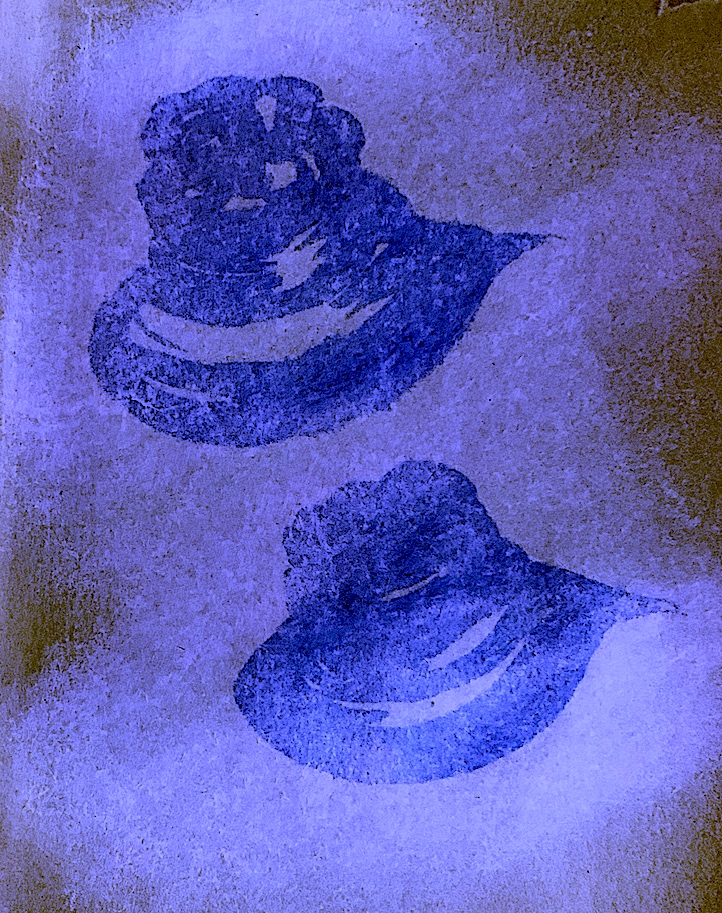
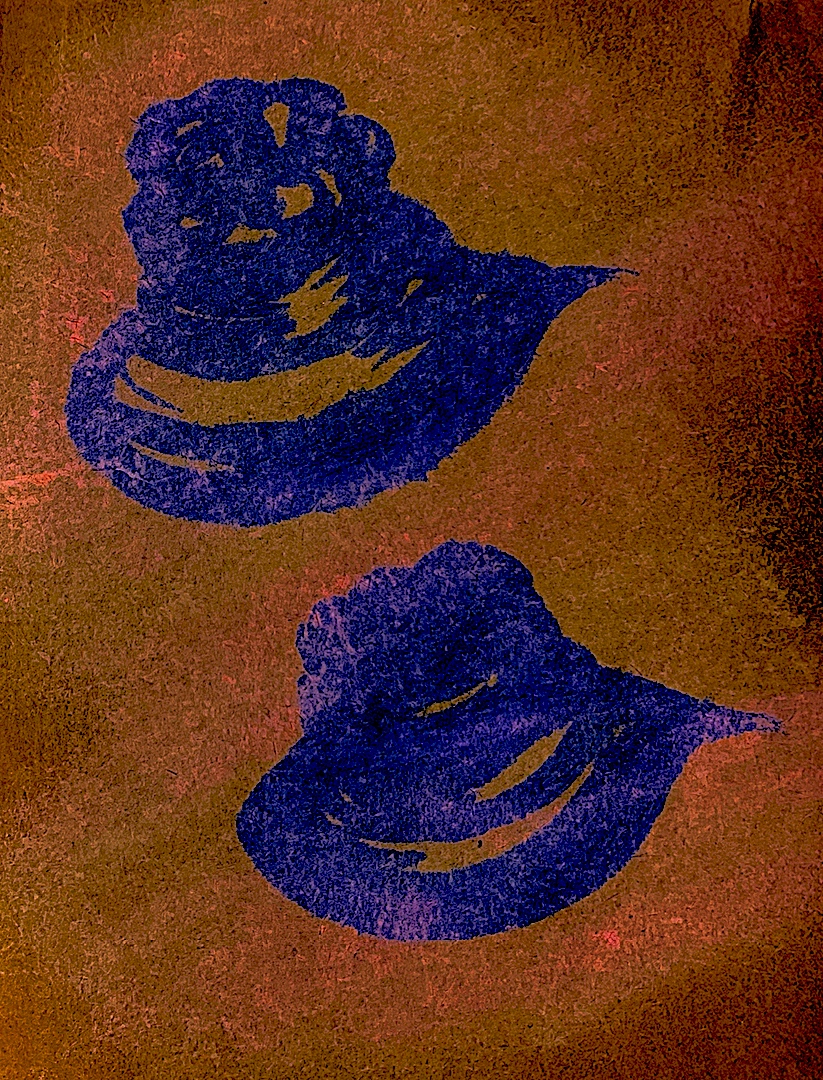
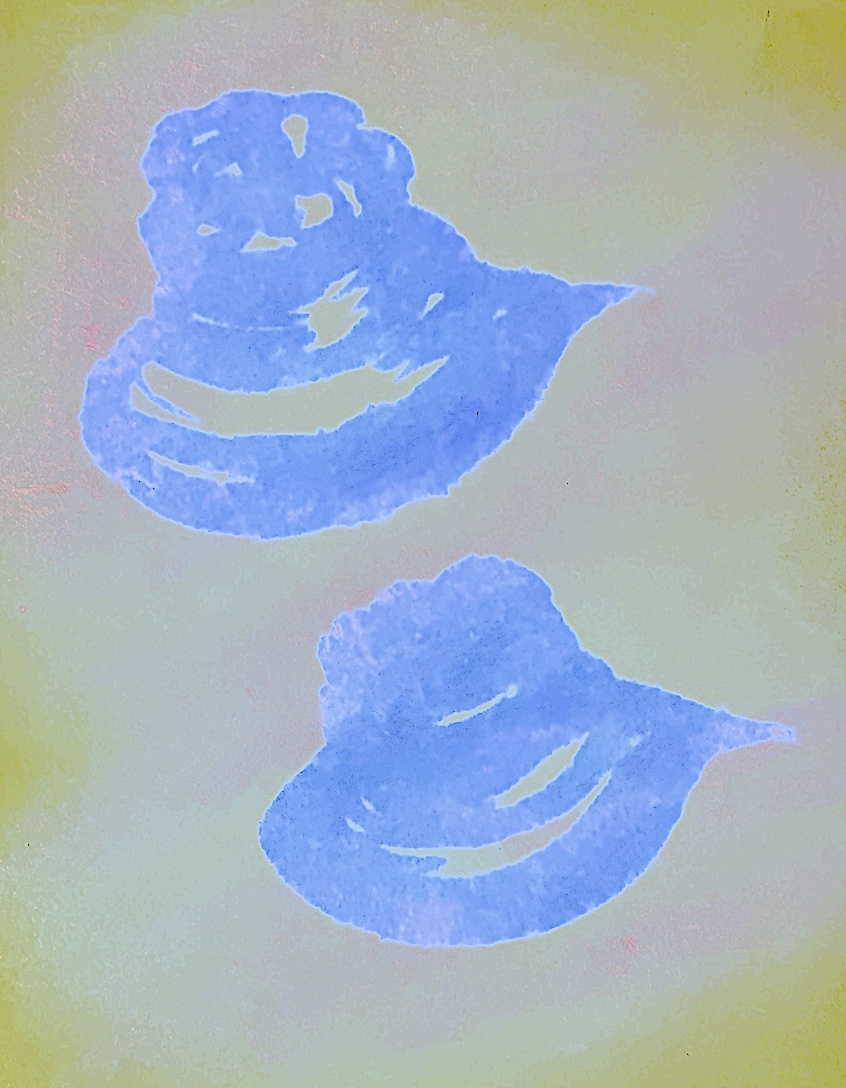
4b. PAINTING made before 1900: ‘The Railway’, 1873 by Edouard Manet. Accessed September 28, 2021. https://www.nga.gov/collection/highlights/manet-the-railway.html.
I have always admired Edouard Manet’s work, ‘The Railway’. The composition is interesting with the partitioning fence rails horizontally enclosing and confining the background scene behind the bars from the foreground. The fence structure pushes the figures right up to the front of the picture plane, squishing them. I like the forward, backward stance of the figures, and the way the female on the left stares strongly at the viewer. In particular, this painting appeals to me, because it reminds me of an enjoyable childhood novel: ‘The Railway Children’ (1906) by Edith Nesbit, later transformed into a film, then a television series.
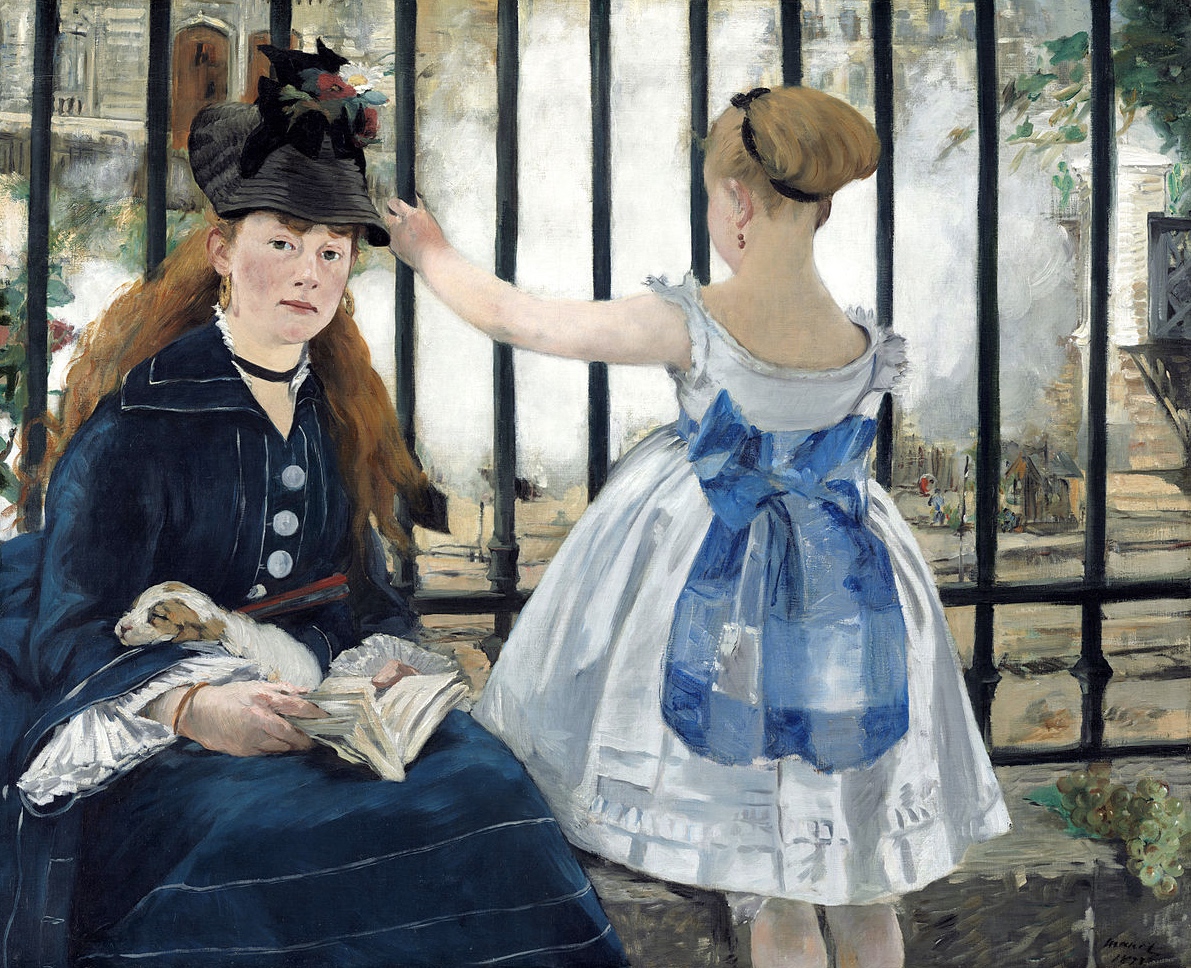
I altered Manet’s painting by changed the colour palette, making it one whole hue of purple. For some reason, I like monochromatic palette schemes.
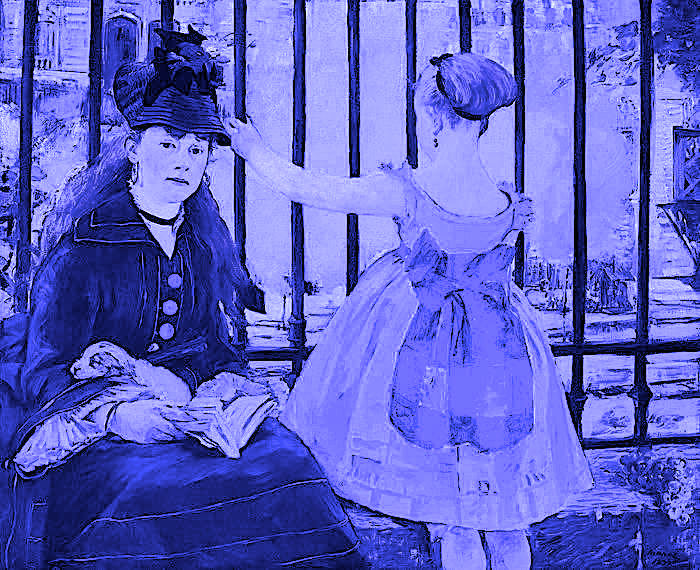
Then, I drew a sketch free-hand with light marks, choosing to use soft fawn and grey ink colours. I made fast marks, as quickly as I could, and my wobbly fence post bars made me laugh. I wanted to give a sense of light, so I subtracted some marks with a rubber to create a large shadow. This overcrosses and highlights the figures, and represents an oncoming train, unlike Manet’s work. I smudged and blended white and pink pastel to symbolise the billowy vapour of the Steam locomotives.
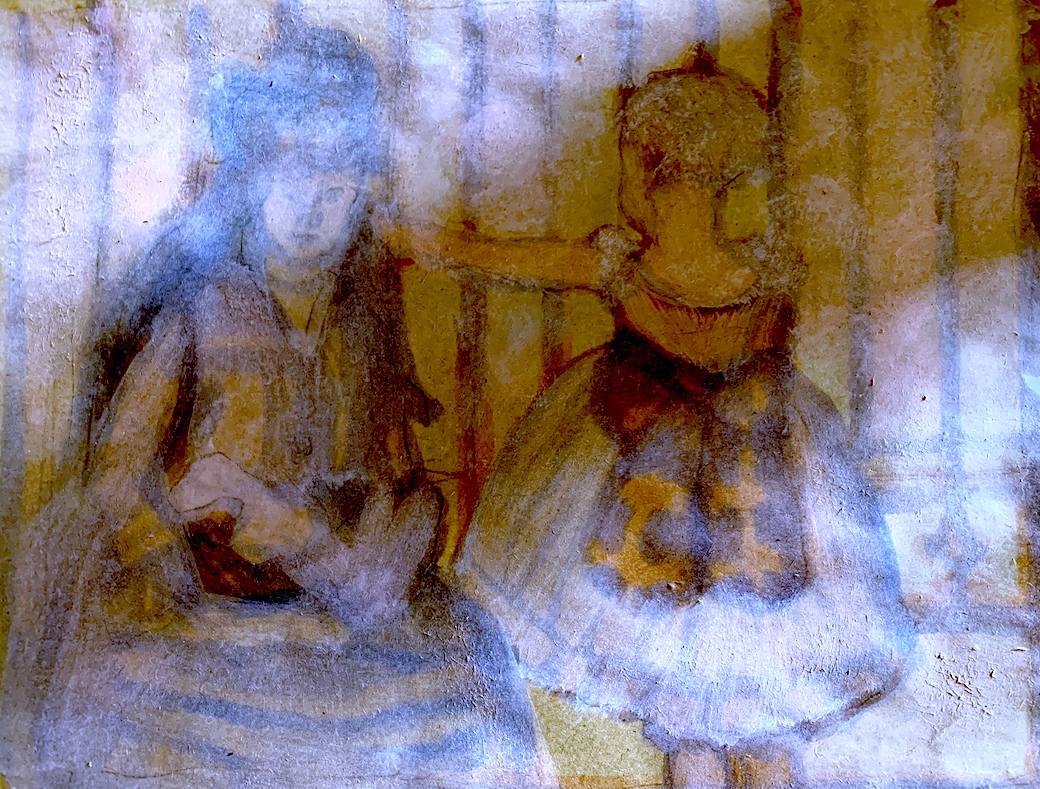
By simplification I abstracted the fence post bars, and drew quickly (and messily) long lengths of vertical lines. Now, I see a repetitive line-up of cool-toned ribbons from dark blue to grey hanging on the washing line. Again to add contrast, and interest, I drew the same size shadow as above, but first this time. I then placed pastel around the edges, and created a negative space before applying the ribbons of colour on top. I like how the neutral brown paper bag shows through.
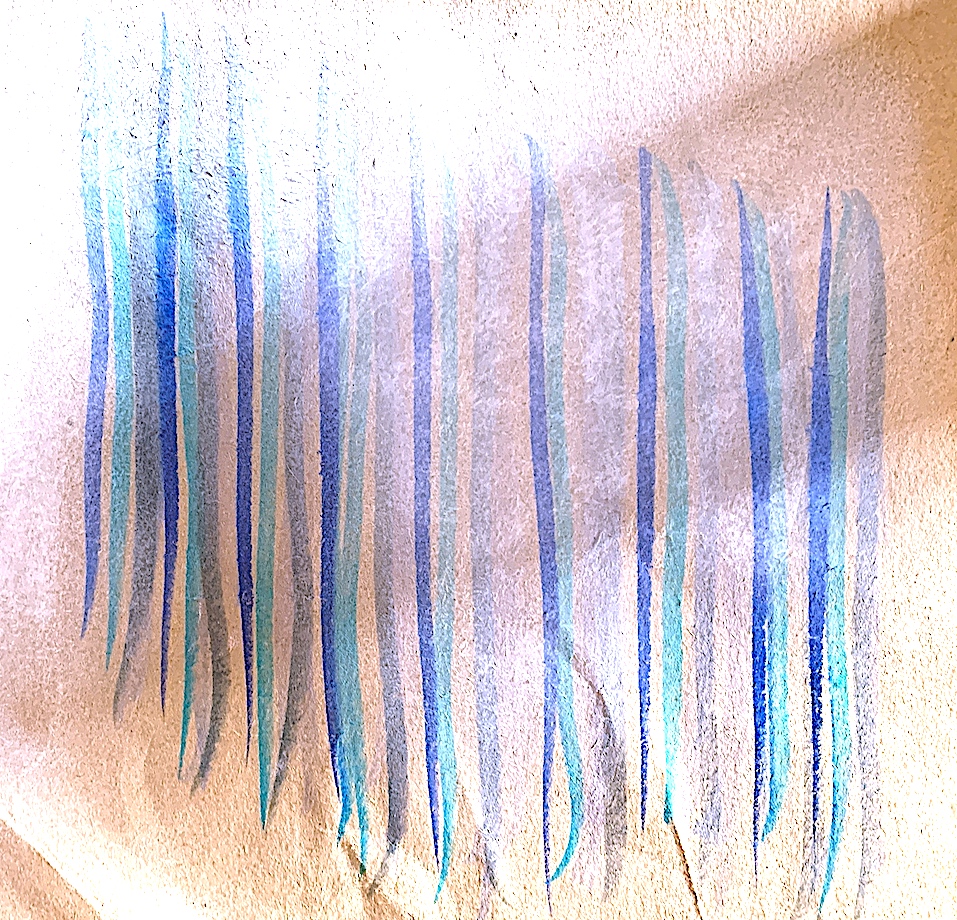
Next, I drew in ink a curving line-up of dancing dresses, (again with no bodies within). Through repetition, and reduction in size, each dress lost a portion of itself. First the bow ribbons drop off, then the bow, and then the tassel frills, etc. as each dress diagonally dances towards the top corner of the picture plane. Again, I first created a diagonal curving shadow (leaving the neutral paper exposed and with no colour) to highlight the shapes moving across the stage space.
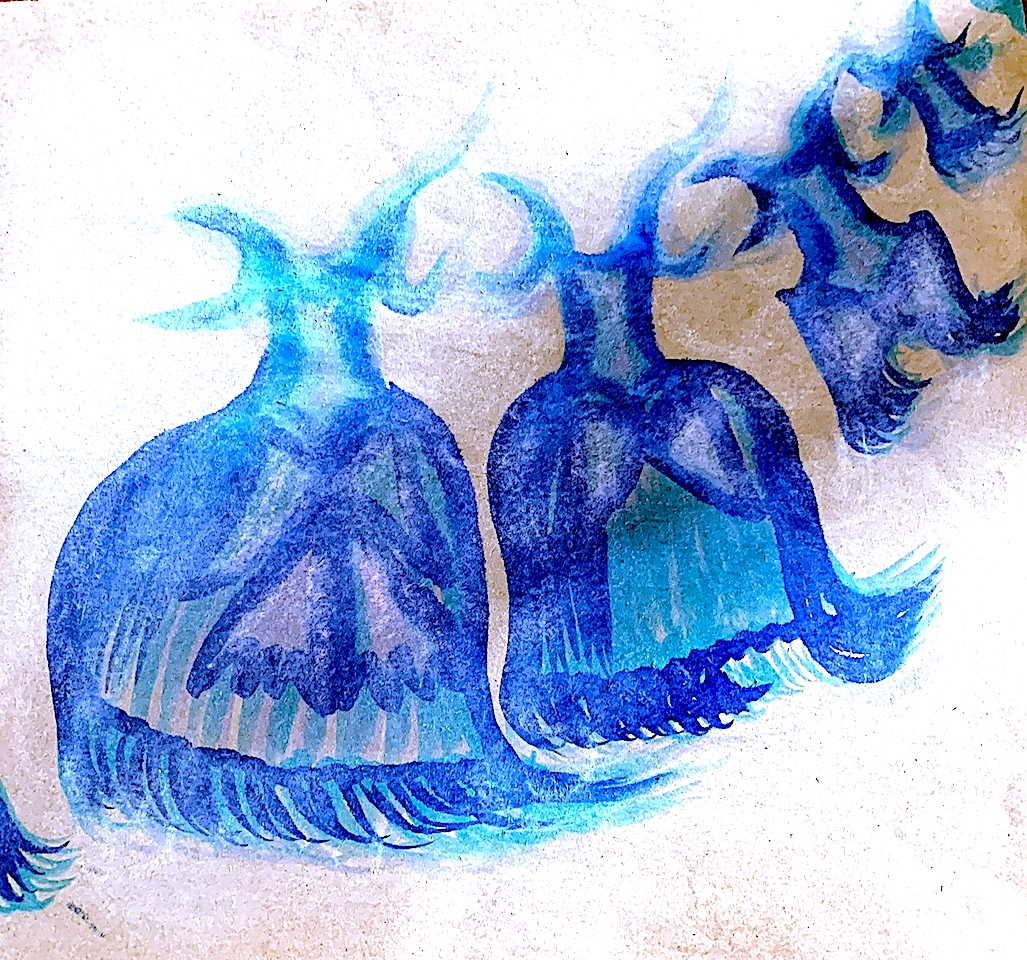
4c. PAINTING made before 1900: ‘Olive Trees’. oil on canvas. 1889. Vincent van Gogh (Dutch, Zundert 1853–1890 Auvers-sur-Oise). Dimensions: 28 5/8 x 36 1/4 in. (72.7 x 92.1 cm). The Metropolitan Museum. Credit Line: The Walter H. and Leonore Annenberg Collection, Gift of Walter H. and Leonore Annenberg, 1998, Bequest of Walter H. Annenberg, 2002. Accessed September 28. 2021. Accession Number: 1998.325.1. https://www.metmuseum.org/art/collection/search/437998.
I chose one of Vincent van Gogh’s ‘Olive Tree’ oil paintings because I admire his series of Olive trees, plus I do love olives, and trees. I own a book with his letters, where he discusses the beautiful French countryside, the Apple tree blossoms and the Olive trees to his brother Theo.

I altered the colours and made the leaves pop off the trees in purple.
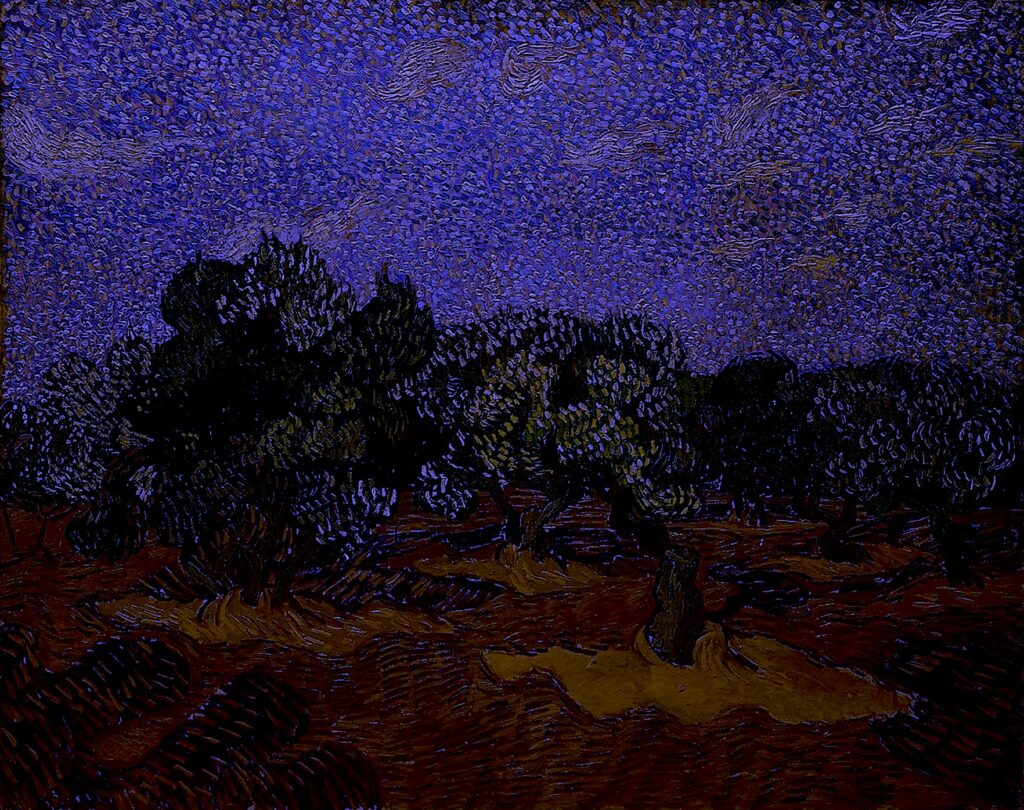
I quickly abstracted shapes from Van Gogh’s painting. I was drawn to the clouds, the shadowy shapes beneath the trees, and the tree trunks.
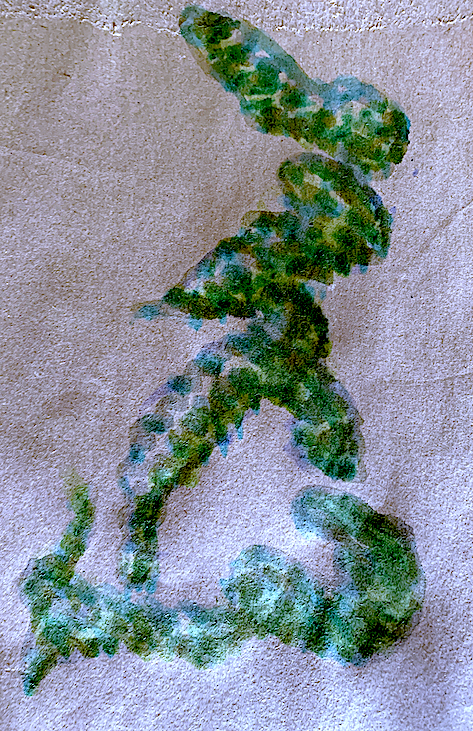
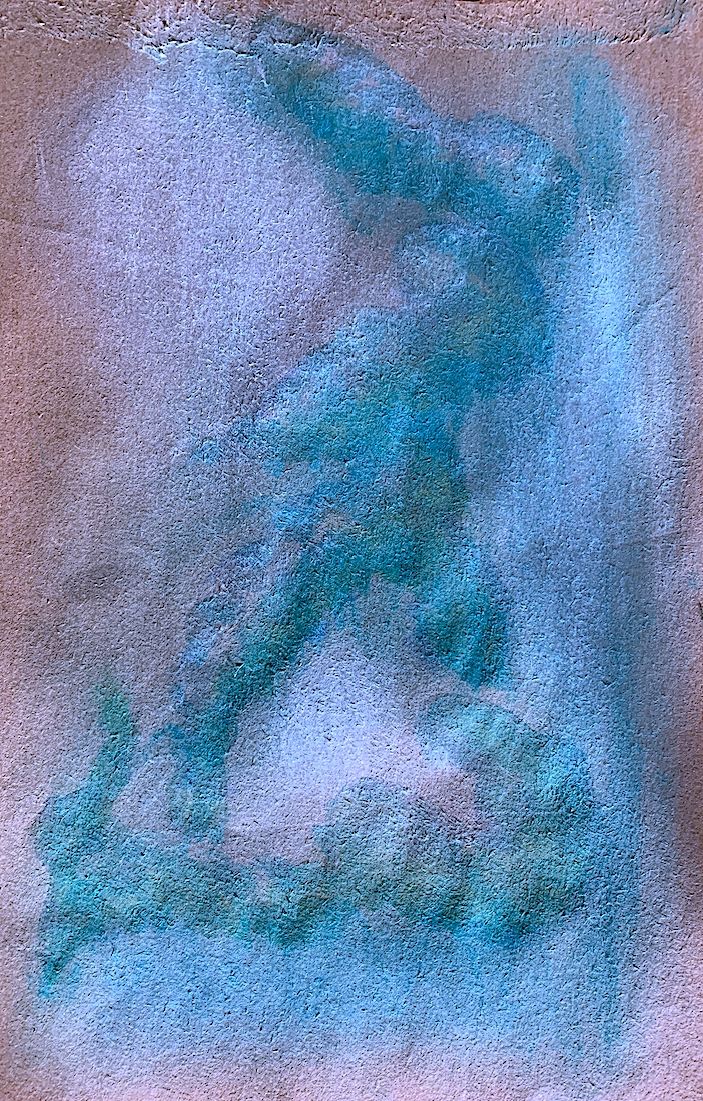
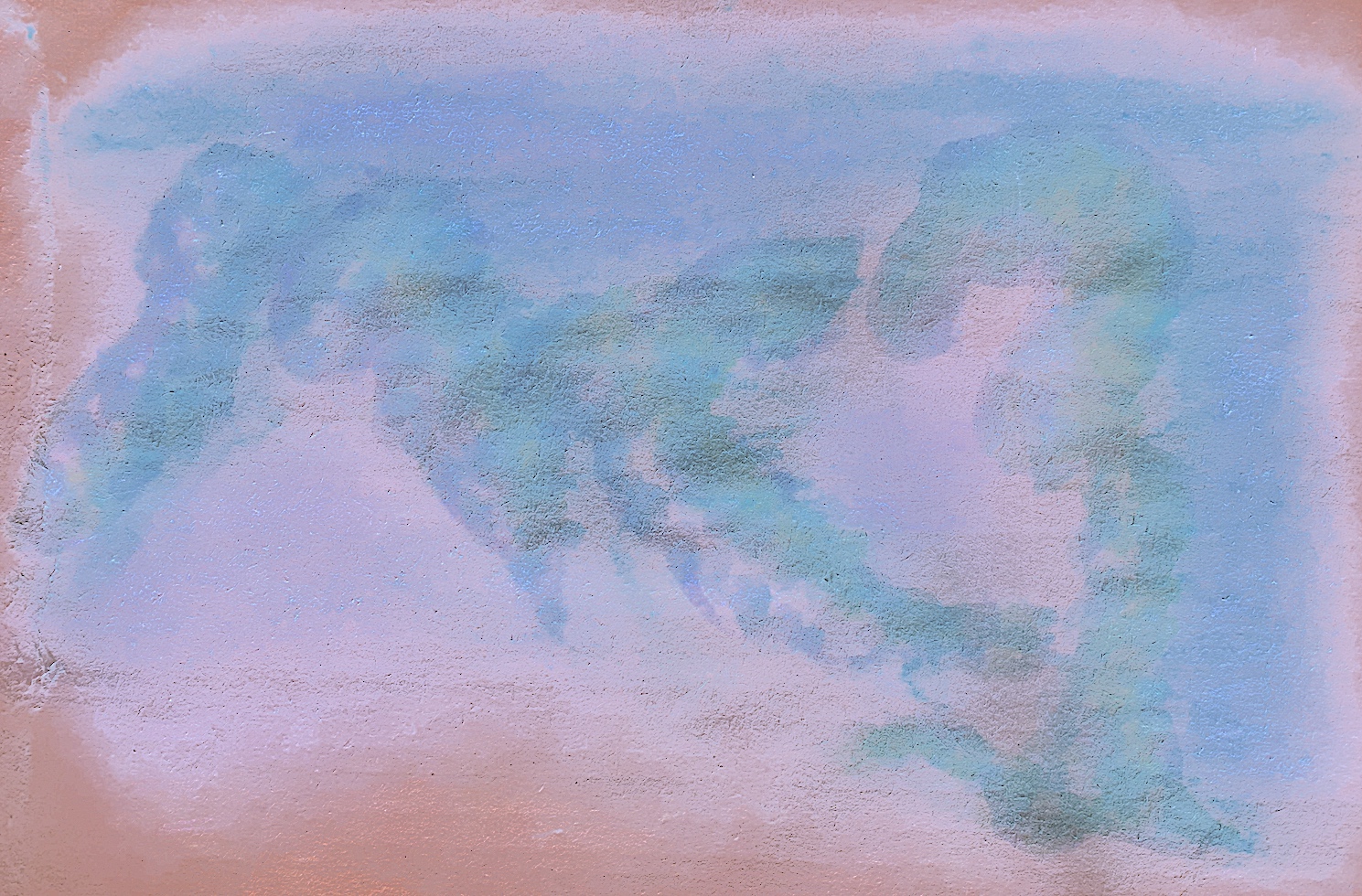
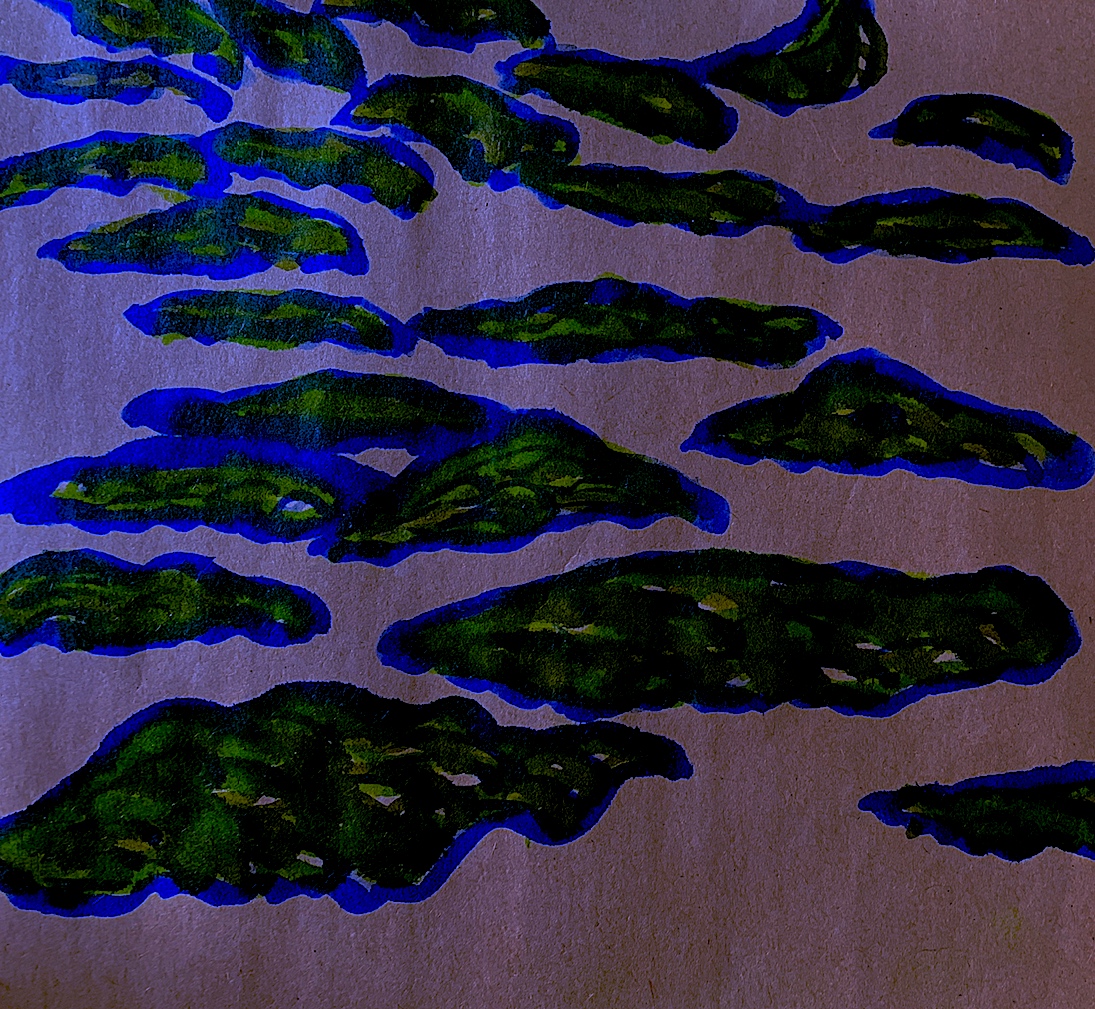
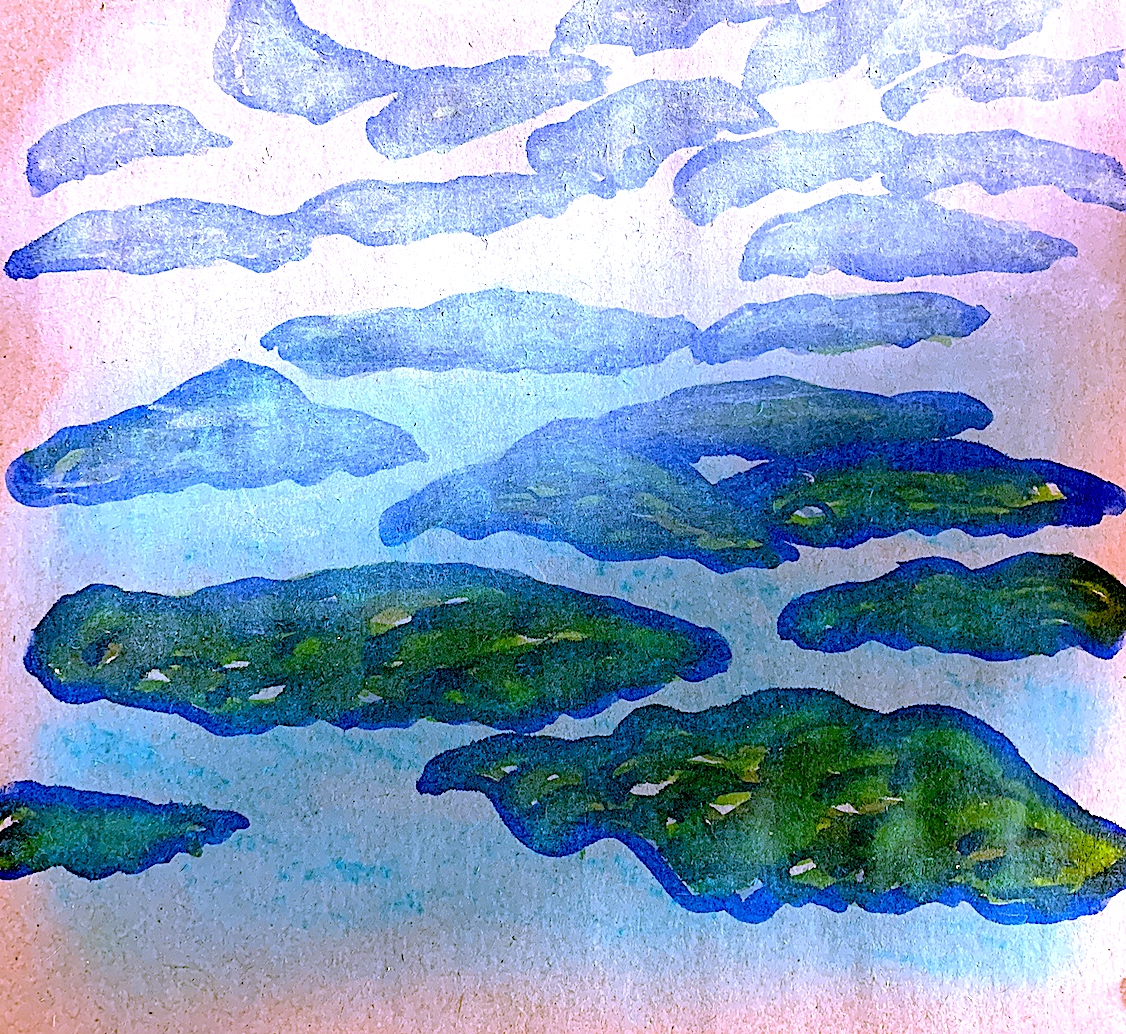
Instead of drawing a tree trunk with branches, my tree trunks became thin and ribbon-like, stretching upwards and linking at the bottom into clumps. My final drawing transformed into a harakeke plant from Aotearoa, rather than a large, thick set, gnarled Vincent Van Gogh tree trunk.
